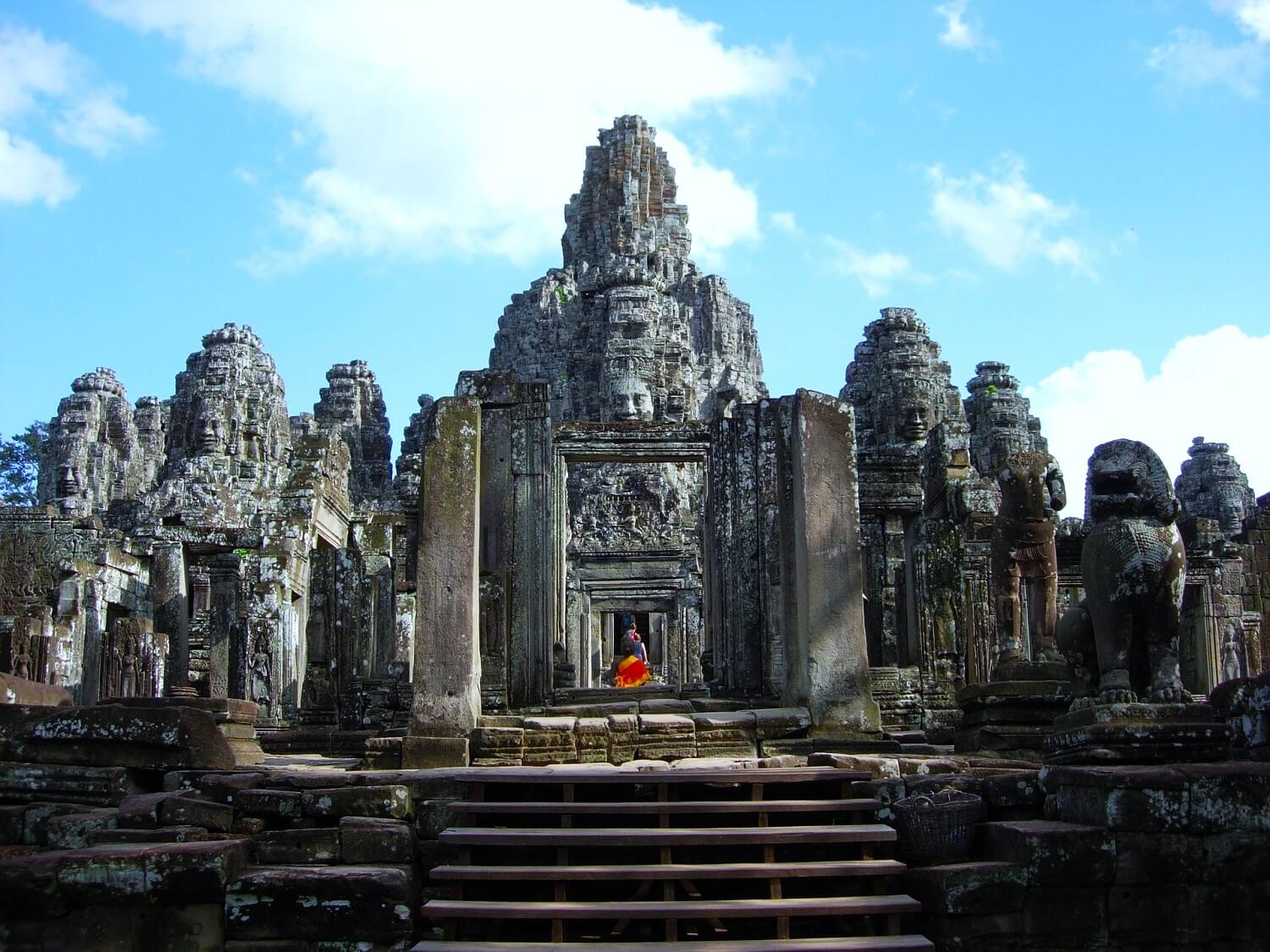Nestled in the heart of Angkor Thom, the ancient capital of the Khmer Empire, Bayon Temple stands as one of Cambodia’s most iconic and enigmatic landmarks. Known for its towering stone faces and intricate bas-reliefs, this 12th-century temple is a must-visit for anyone exploring the Angkor Archaeological Park. In this comprehensive guide, we’ll dive into the history, architecture, and practical tips for visiting Bayon Temple, ensuring you make the most of your journey to this UNESCO World Heritage Site.
The History of Bayon Temple
Bayon Temple was built in the late 12th or early 13th century by King Jayavarman VII, Bayon Temple is a masterpiece of Khmer architecture. It served as the state temple of the king and was the center of the ancient city of Angkor Thom. Unlike other temples in the region, Bayon is unique for its smiling stone faces, which are believed to represent the bodhisattva Avalokiteshvara or a combination of the king and the deity.
The temple originally featured 54 towers, each adorned with four serene faces, symbolizing the omnipresence of the king. Over time, the temple underwent modifications, blending Buddhist and Hindu elements, reflecting the religious shifts in the Khmer Empire.
Why Bayon Temple is a Must-Visit
- The Enigmatic Smiling Faces: The 216 stone faces of Bayon are its most distinctive feature. Their serene expressions seem to follow you as you explore the temple, creating an unforgettable experience.
- Intricate Bas-Reliefs: The temple’s walls are adorned with over 1.2 kilometers of bas-reliefs depicting historical events, daily life, and mythological scenes. These carvings provide a glimpse into the Khmer Empire’s rich history.
- Architectural Marvel: Bayon’s unique design, with its multi-tiered structure and labyrinthine layout, showcases the ingenuity of Khmer architects.
- Spiritual Significance: As a former Buddhist temple, Bayon exudes a sense of tranquility and spirituality, making it a profound place for reflection.
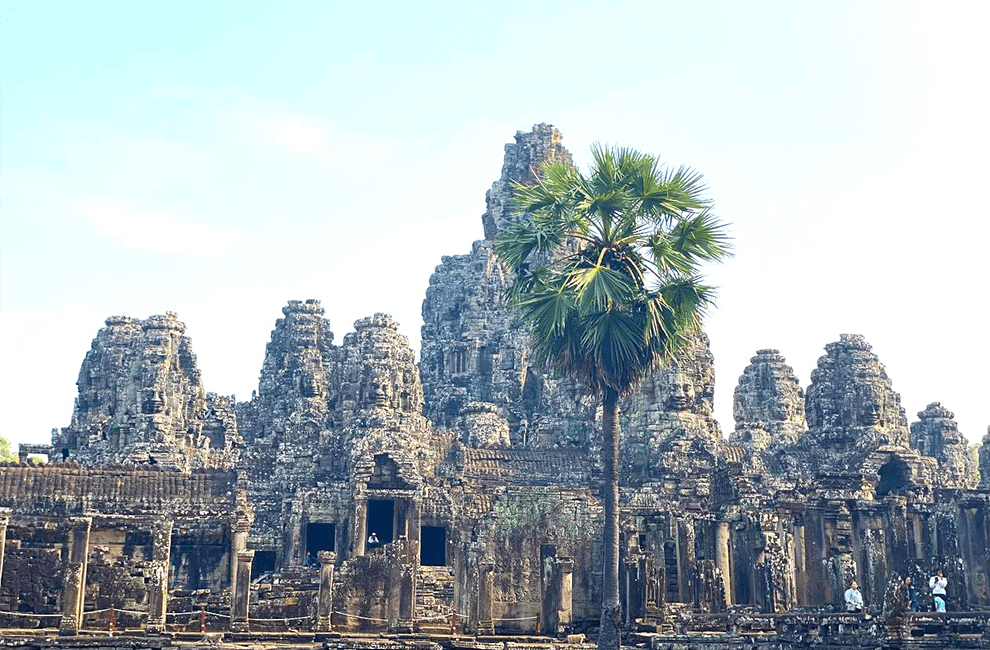
How to Get to Bayon Temple
Bayon Temple is located within the Angkor Archaeological Park, approximately 7 kilometers north of Siem Reap. Here’s how to get there:
- From Siem Reap: Hire a tuk-tuk, taxi, or rent a bicycle. The journey takes about 20-30 minutes.
- Angkor Pass: Purchase an Angkor Pass at the park entrance. A 1-day pass costs $37, 3-day passis $62, and a 7-day pass is $72. Here is the guide how to buy Angkor Wat Pass.
- Guided Tours: Consider joining a guided tour to gain deeper insights into the temple’s history and significance.
Best Time to Visit Bayon Temple
To fully appreciate Bayon Temple, timing is key:
- Early Morning: Arrive at sunrise (around 5:30 AM) to avoid crowds and witness the temple bathed in golden light.
- Late Afternoon: Visit around 4:00 PM for softer lighting and fewer tourists.
- Avoid Midday: The heat can be intense, and the lighting is less favorable for photography.
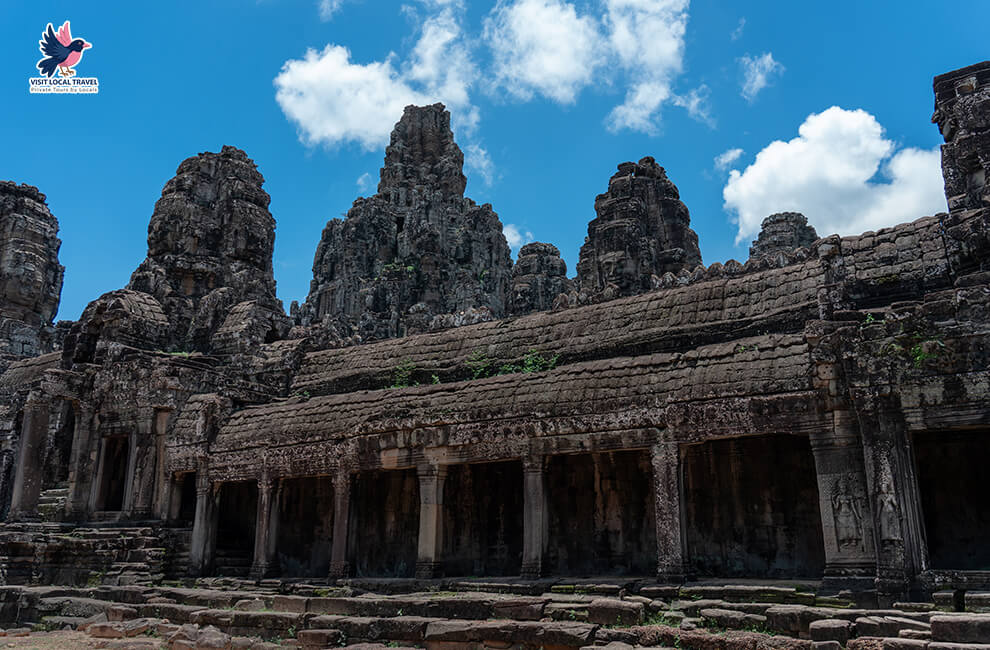
Exploring Bayon Temple: A Step-by-Step Guide
1. Enter Through the South Gate
Start your journey by entering Angkor Thom through the South Gate, flanked by 54 statues of gods and demons. This grand entrance sets the tone for your visit.
2. Admire the Bas-Reliefs
As you approach the temple, take time to explore the bas-reliefs on the outer walls. These intricate carvings depict scenes from Khmer history, including battles, religious ceremonies, and daily life.
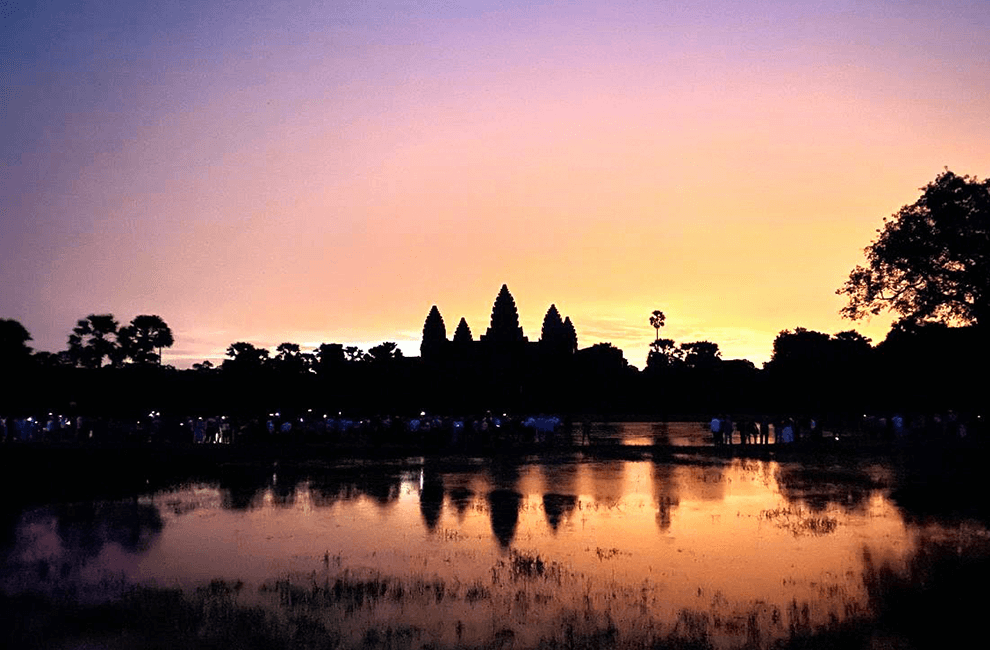
Private Sunset Tour of Kampong Phluk Floating Village
- Duration: 9 Hours
- Destination: Siem Reap
- Group Size: 2-12 People
$113
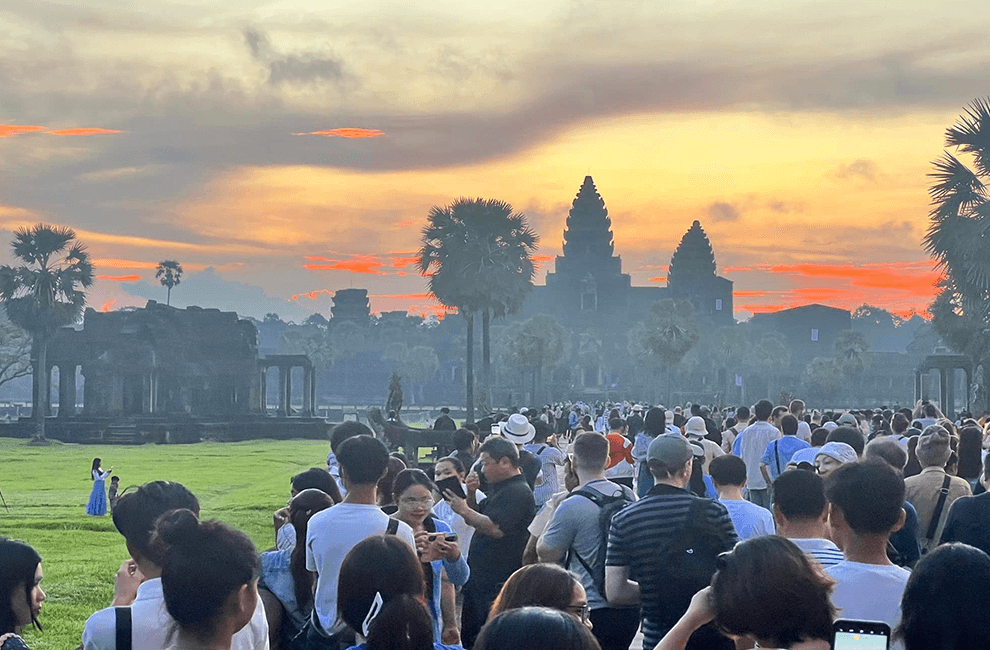
Angkor Wat Adventure
- Duration: 8 Hours
- Destination: Siem Reap
- Group Size: 2-12 People
$98
3. Climb to the Upper Terrace
The upper terrace is where you’ll find the iconic smiling faces. Wander through the maze-like corridors and marvel at the towering stone faces, each exuding a sense of calm and mystery.
4. Visit the Central Sanctuary
At the heart of the temple lies the central sanctuary, once housing a large Buddha statue. This area is considered the spiritual core of Bayon.
5. Capture the Perfect Photo
The interplay of light and shadow at Bayon creates endless photo opportunities. Don’t miss the chance to capture the smiling faces against the backdrop of the Cambodian sky.
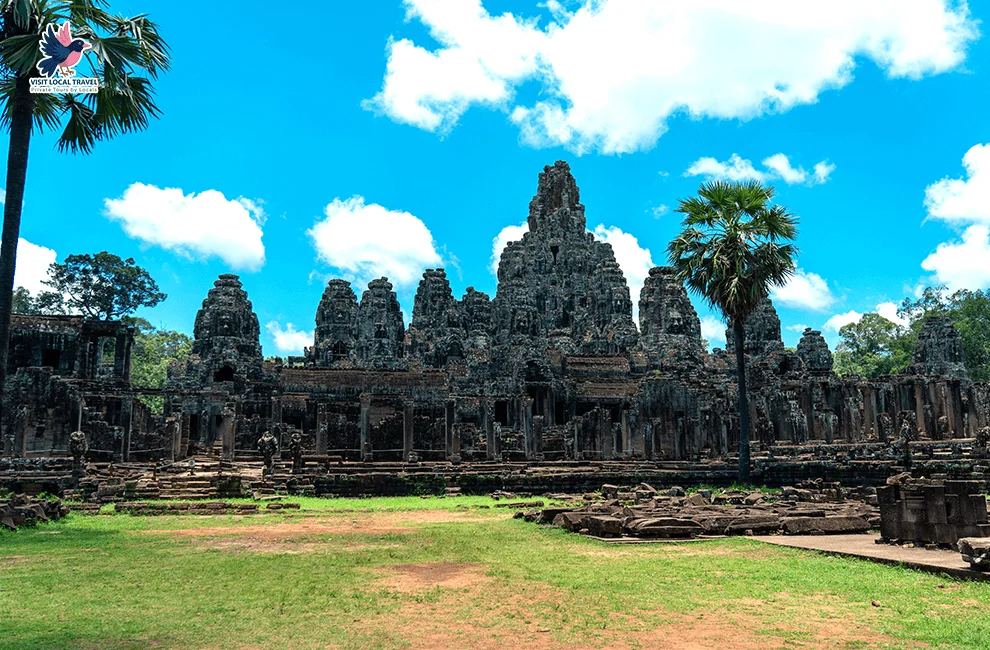
Tips for Visiting Bayon Temple
- Dress Modestly: As a religious site, Bayon requires visitors to cover their shoulders and knees.
- Wear Comfortable Shoes: The temple’s uneven surfaces and steep staircases demand sturdy footwear.
- Stay Hydrated: Carry plenty of water, especially if visiting during the hotter months.
- Hire a Guide: A knowledgeable guide can enhance your experience by sharing fascinating stories and historical context.
- Respect the Site: Avoid touching the carvings or climbing on restricted areas to preserve the temple for future generations.
Nearby Attractions
While in Angkor Thom, don’t miss these nearby attractions:
- Baphuon Temple: A massive pyramid-shaped temple dedicated to Shiva.
- Phimeanakas: An ancient royal palace with stunning views from the top.
- Terrace of the Elephants: A grand platform adorned with elephant carvings, used for royal ceremonies.
- Ta Prohm: Known as the “Tomb Raider Temple“, this jungle-covered ruin is a short drive from Bayon.
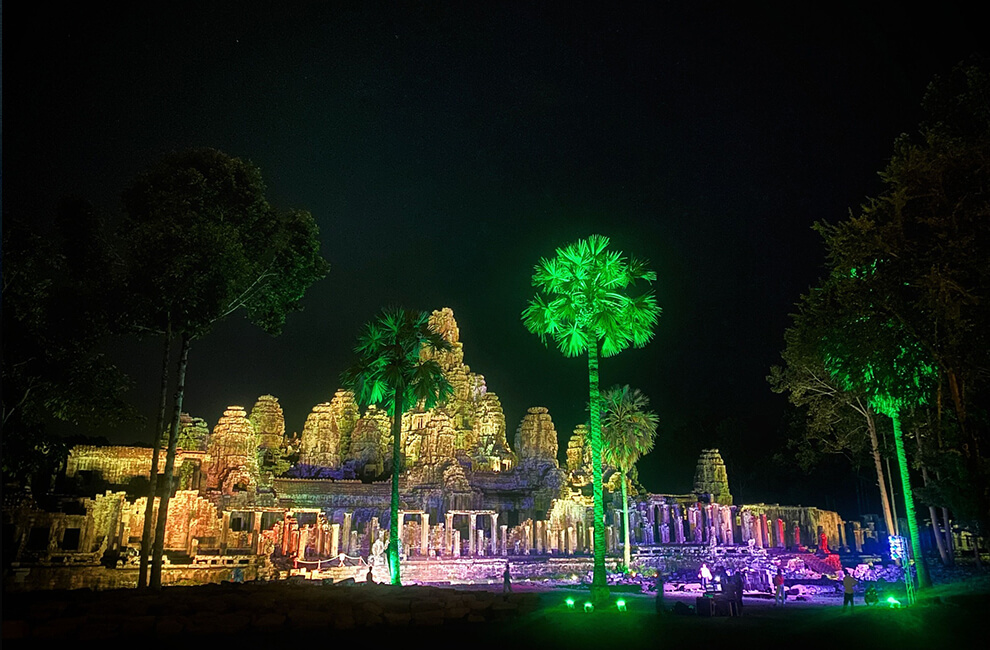
FAQs About Bayon Temple
1. What is the significance of the smiling faces at Bayon Temple?
The smiling faces are believed to represent the bodhisattva Avalokiteshvara, a symbol of compassion, or a combination of the king and the deity. They also symbolize the king’s omnipresence and benevolence.
2. How long does it take to explore Bayon Temple?
Plan to spend 1-2 hours exploring Bayon, depending on your pace and interest in the details.
3. Is Bayon Temple wheelchair accessible?
Due to its uneven terrain and steep staircases, Bayon is not wheelchair accessible.
4. Can I visit Bayon Temple without a guide?
Yes, you can explore Bayon independently, but a guide can provide valuable insights into its history and architecture.
Conclusion
Bayon Temple is more than just a historical site; it’s a journey into the heart of the Khmer Empire. Its smiling stone faces, intricate carvings, and spiritual ambiance make it a highlight of any trip to Siem Reap. By following this guide, you’ll be well-prepared to explore this architectural marvel and create memories that will last a lifetime.
Whether you’re a history buff, a photography enthusiast, or a spiritual seeker, Bayon Temple promises an unforgettable experience. So pack your bags, grab your camera, and get ready to discover the magic of Cambodia’s iconic smiling faces.


